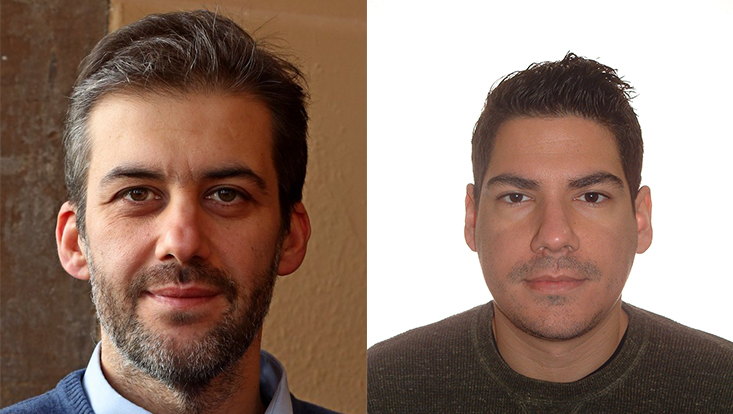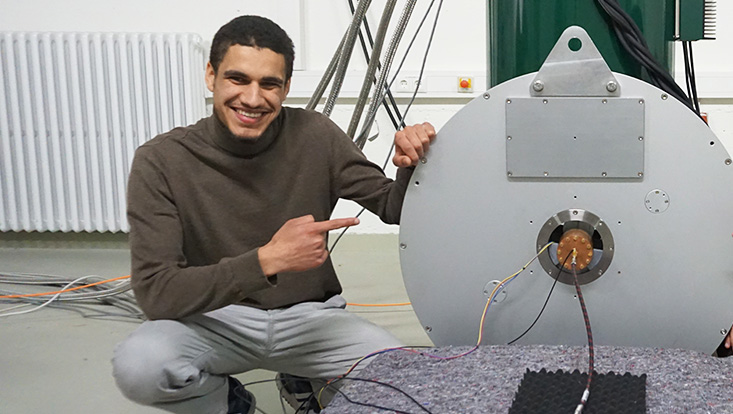Dark Matter and Neutrino researchMarie Skłodowska-Curie Fellowship for astroparticle physics
9 July 2025

Photo: D. Spathara (left) and D. Papoulias (right)
A Marie Skłodowska-Curie Fellowship will start in February 2026 in the group of Prof. Dr. Konstantinos Nikolopoulos, experimental physicist at Universität Hamburg—University of Excellence. Funding of around 200,000 euros will be provided for the two-year research project neutrinoSPHERE.
Theoretical physicist Dr. Dimitrios Papoulias from the Instituto de Física Corpuscular (Spanish National Research Council CSIC, University Valencia, Spain) is coming to the University of Hamburg for the fellowship. Over the next two years, he intends to develop innovative machine learning methods that will significantly expand the possibilities for analyzing data from the NEWS-G detector. By this, Papoulias will contribute to exploring two of the biggest mysteries of modern particle physics: the origin of neutrino mass and the nature of dark matter.
Neutrinos belong to the elementary particles, the smallest building blocks of matter. They are constantly created in space, for example during nuclear fusion in the sun or when stars explode, and permeate the entire universe. Similarly, dark matter constantly pervades space. However, because both neutrinos and dark matter hardly interact with other particles, they are very difficult to detect. With the international NEWS-G experiment, researchers want to get to the bottom of these shy particles.
The experiment is set up deep underground in a Canadian laboratory to be shielded from any external interference. The detector consists of a huge copper sphere filled with a so-called noble gas, a gas that reacts very little chemically. However, when neutrinos or dark matter from outer space enter the detector, they split off electrons from the noble gas. These electrons can be measured. This detector is a highly sensitive instrument that can measure much weaker signals than other detectors.
Using this novel technology will provide new insights into the properties of neutrinos and dark matter – and it may even point to the existence of new types of elementary particles beyond the Standard Model of particle physics.
With the Marie Skłodowska-Curie Actions, the European Union promotes the international careers of researchers. The measures are part of the European Framework Program for Research and Innovation, Horizon 2020, and are named after the two-time Nobel Prize winner Marie Skłodowska Curie.


